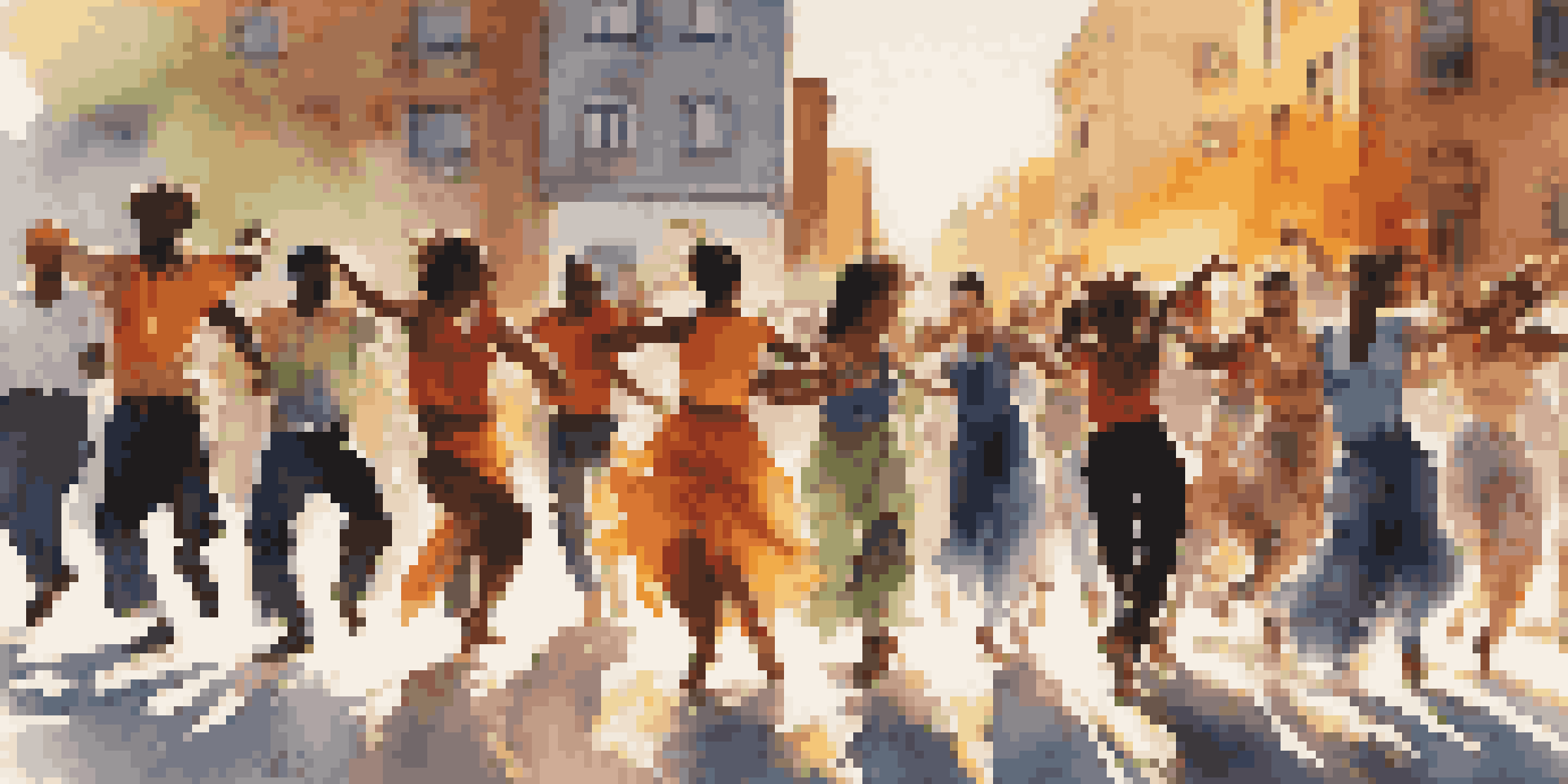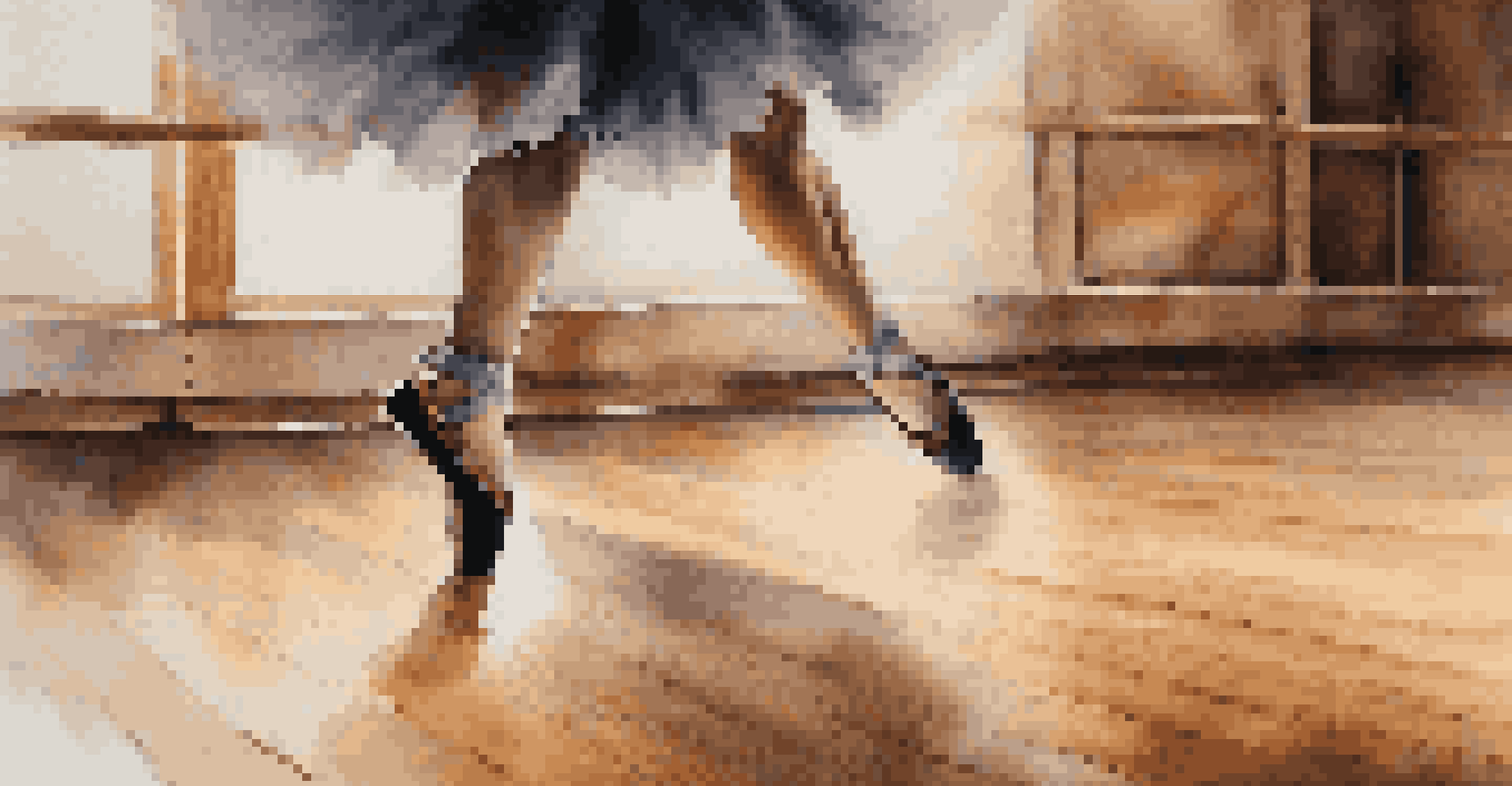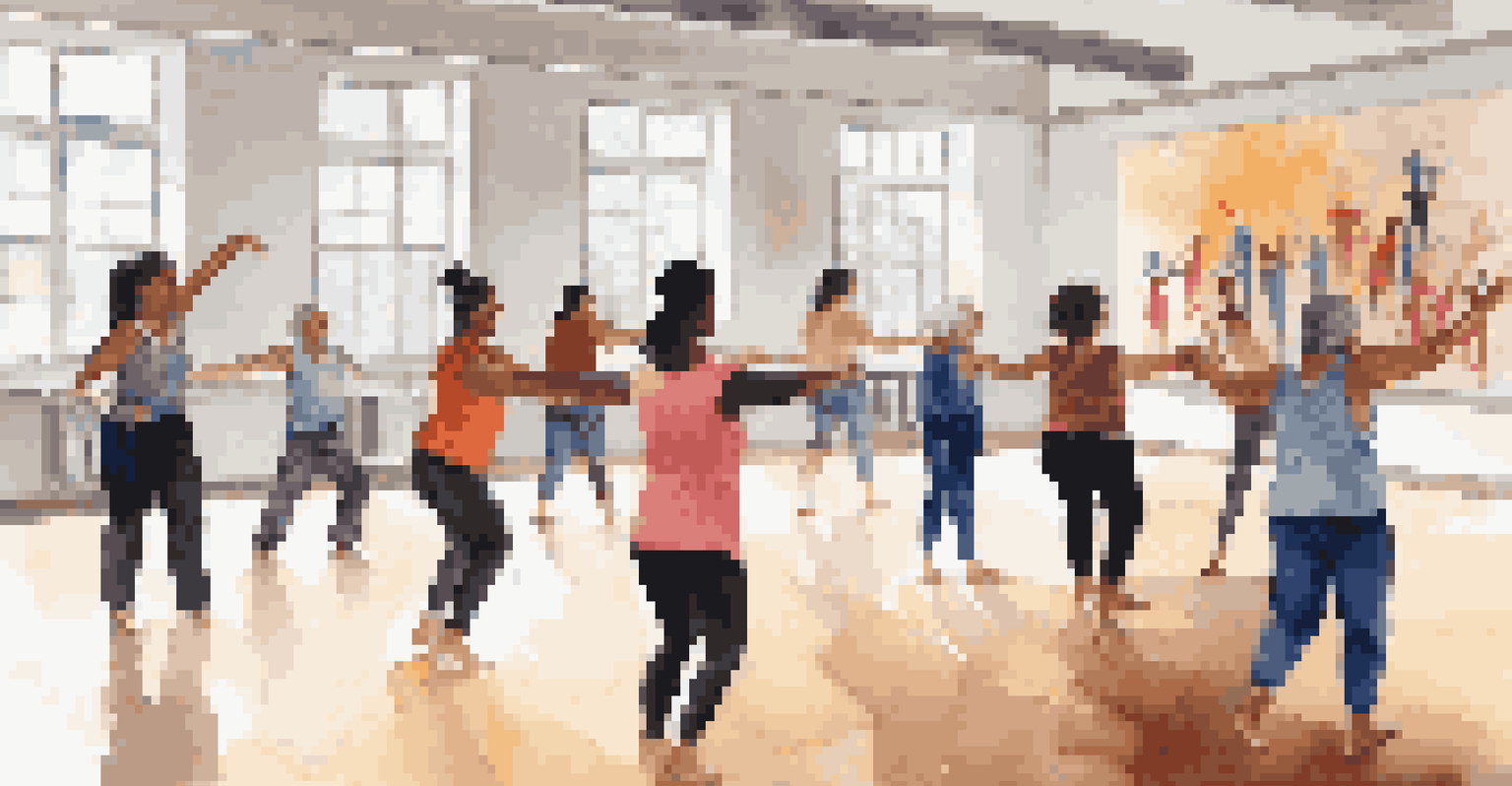The Power of Dance in Addressing Racial Injustice

Dance as a Form of Expression Against Injustice
Dance has long been a universal language that transcends barriers, allowing individuals to express their emotions and experiences. In the context of racial injustice, dance becomes a potent tool for communicating the pain and resilience of marginalized communities. Through movement, dancers can tell stories that words often fail to capture, making the fight against injustice both visceral and relatable.
Dance is the hidden language of the soul.
Consider the powerful imagery of protest dances that have emerged in recent years. These performances are not just artistic expressions, but also political statements that challenge societal norms and provoke thought. By embodying their struggles through dance, artists can inspire others to join the conversation and take action, reminding us that we are all connected in the fight for equality.
Furthermore, dance fosters a sense of community among those who share similar experiences. It creates a safe space for individuals to come together, find solidarity, and uplift each other’s voices. This collective expression not only strengthens the movement but also highlights the importance of unity in addressing racial injustice.
Historical Roots: Dance in Civil Rights Movements
Looking back at history, dance has played a significant role in various civil rights movements. From the spirituals sung by enslaved Africans to the vibrant dances of the Harlem Renaissance, movement has been a way for communities to assert their identity and fight against oppression. These forms of dance were not just entertainment; they carried messages of hope, resistance, and community strength.

Throughout the Civil Rights Movement of the 1960s, dance became a symbol of rebellion and freedom. Events like the March on Washington featured performances that galvanized participants and spread messages of equality. The combination of music and movement helped to energize the crowd, making the fight for civil rights feel alive and urgent.
Dance as a Voice Against Injustice
Dance serves as a powerful medium for marginalized communities to express their pain and resilience, transcending language barriers.
Today, contemporary dancers often pay homage to these historical movements, weaving their legacy into modern performances. This connection between past and present serves as a reminder that the struggle for justice is ongoing, and dance remains a vital part of that narrative.
Dance as Activism: Recent Movements and Initiatives
In recent years, we’ve seen a surge in dance activism, where artists use their platforms to address racial injustice. Initiatives like 'Dance for Justice' highlight the power of movement as a means to raise awareness and funds for social causes. These events not only showcase talent but also unite communities in a shared mission to promote equity and inclusion.
Art should comfort the disturbed and disturb the comfortable.
Social media has amplified this phenomenon, allowing dancers to reach wider audiences. Hashtags like #DancetoEndRacism have encouraged participants to share their performances online, creating a global dialogue around racial issues. This digital platform has transformed dance into a rallying cry, sparking conversations that extend beyond the stage.
Moreover, collaborations between dancers and activists have led to impactful performances that directly engage with current events. These projects often blend traditional dance forms with contemporary themes, making them accessible and relevant to diverse audiences. By merging art and activism, dancers are able to create a compelling narrative that challenges the status quo.
Healing Through Dance: A Space for Reflection
Dance also serves as a means of healing for individuals affected by racial injustice. In workshops and community classes, participants can use movement to process their emotions and experiences. This therapeutic aspect of dance helps to foster resilience and encourages personal growth amidst societal challenges.
Through improvisation and guided movement, dancers are able to explore their feelings in a supportive environment. This can lead to a sense of catharsis, allowing individuals to release pent-up emotions and find solace in their bodies. In this way, dance becomes a valuable tool for mental and emotional well-being.
Historical Significance of Dance
Throughout history, dance has been integral to civil rights movements, embodying messages of hope and unity in the struggle against oppression.
Additionally, the communal aspect of dance encourages connection and understanding among participants. By sharing their stories through movement, individuals can bond over shared experiences, creating a sense of belonging. This healing process is crucial in the ongoing fight against racial injustice, as it empowers individuals to reclaim their narratives.
Influence of Dance on Cultural Identity and Representation
Dance plays a pivotal role in shaping cultural identity, especially for marginalized groups. Traditional dances often carry historical significance, preserving the stories and struggles of a community. By celebrating these art forms, dancers can assert their cultural heritage and challenge stereotypes that perpetuate racial injustice.
Moreover, representation in dance is crucial for fostering inclusivity. When diverse voices and movements are showcased, it allows for a richer understanding of the human experience. This representation not only empowers dancers of color but also educates audiences about different cultures and their histories.
Through performances that blend various dance styles, artists can create conversations about race and identity. This fusion not only highlights the beauty of diversity but also serves as a reminder that we all contribute to the tapestry of society. By embracing and honoring different cultural narratives, dance can unite people in the pursuit of justice.
The Role of Education in Promoting Dance and Activism
Educational programs that incorporate dance can play a transformative role in addressing racial injustice. By teaching students about the history and significance of dance in social movements, educators can inspire the next generation of activists. This understanding fosters empathy and encourages young people to use their creativity for social change.
Schools and community centers that offer dance classes focused on cultural education also help to bridge gaps. These programs allow students to engage with diverse dance forms, promoting respect and appreciation for different cultures. This awareness is vital in cultivating a more inclusive society.
Activism Through Movement Today
Recent dance initiatives leverage social media and community engagement to raise awareness and funds for racial equity and justice.
Furthermore, integrating dance into discussions about social justice can empower students to express their thoughts and feelings. Whether through choreographed pieces or improvisational workshops, participants can explore complex themes while developing their artistic skills. This holistic approach prepares individuals to navigate and challenge societal injustices through the lens of art.
The Future of Dance in the Fight for Racial Equality
As we look to the future, the role of dance in advocating for racial equality is likely to grow even more prominent. With the rise of digital platforms, dancers can reach audiences around the world, spreading messages of justice and unity. This evolution allows for a broader dialogue around racial issues, ensuring that dance remains a vital part of activism.
Moreover, the continued collaboration between artists and activists will pave the way for innovative performances that challenge societal norms. As new generations of dancers emerge, we can expect fresh perspectives and creative approaches to addressing racial injustice. These contributions will be essential in keeping the conversation alive and relevant.

Ultimately, the power of dance lies in its ability to connect people, evoke emotions, and inspire change. By harnessing this art form, we can not only celebrate diversity but also actively participate in the ongoing fight for racial justice. Dance will continue to be a beacon of hope, reminding us that together, we can create a more equitable world.